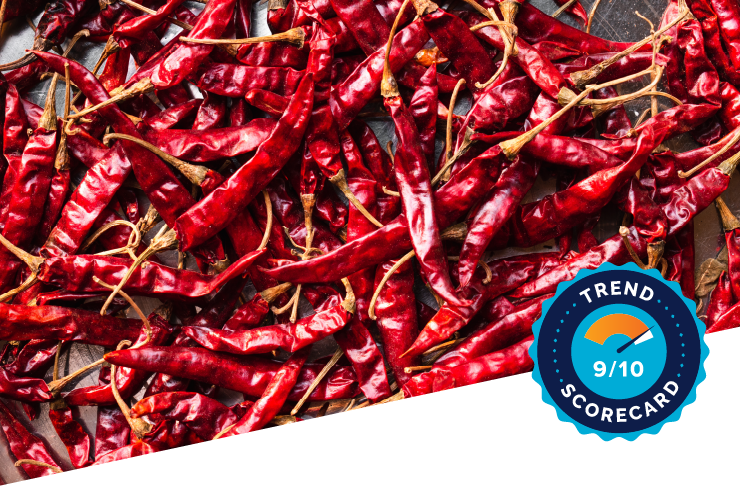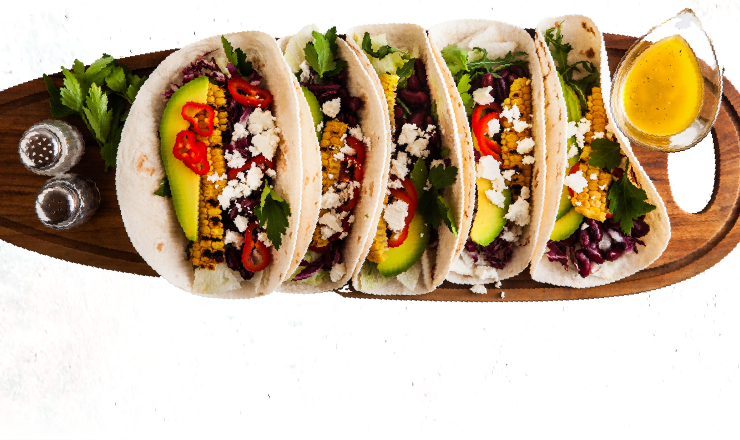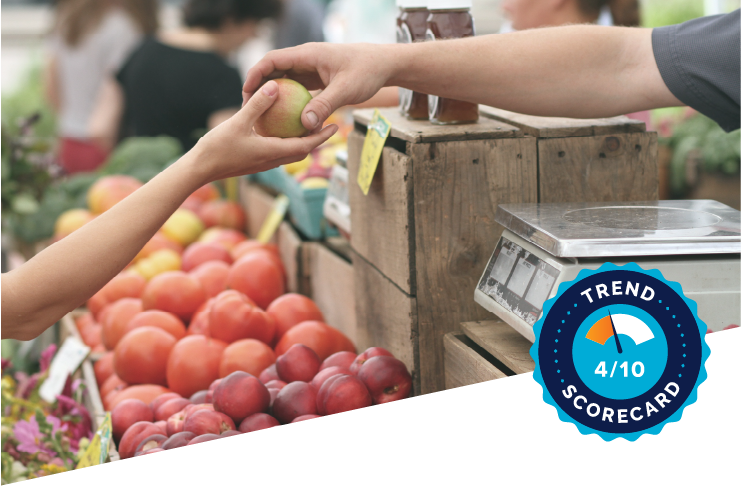
2023 Trends Realized on Trade Show Floor
Industry Trends, Ingredient Trends
Winter Fancy Food Show, Southern California IFT Supplier’s Night and Natural Product Expo West...oh my!
Bluegrass Ingredients On-site Hiring Event | March 19 | Glasgow, KY.
The food manufacturing industry changes fast. The start of each year is marked with bold predictions and forecasts from analysts and manufacturers attempting to anticipate evolving consumer appetites. Some of those predictions prove true, others miss the mark entirely. Most fall somewhere in the middle.
The Agile Kitchen at Bluegrass is dedicated to tracking these trends and their impact on ingredient innovation and product development.
In this inaugural report, our team of food scientists, culinary specialists and R&D experts reviews some of the most-discussed food manufacturing trends of the last year. We analyze what predictions came true and where the crystal ball may have missed the mark. Most importantly, we spell out what it means for manufacturers now and what the future of food manufacturing looks like in 2023.

PREDICTED TREND
Consumers lost interest in plant-based meat, while more innovative applications that harnessed the environmental and health-based elements of plant-based remained strong.
At the start of 2022, every analyst had plant-based products on their radar and were predicting major surges in demand and innovation. Many of those predictions focused specifically on plant-based meat, a billion-dollar industry with high-profile products like the McPlant from McDonald’s.
Today, plant-based projections are a bit more modest – and nuanced. Plant-based meat sales dipped over the last year. The McPlant was put on permanent hiatus. This shift occurred for a few notable reasons:

While plant-based meat lost ground, the plant-based sector overall remains poised for significant growth. Innovative and inventive plant-based products remain in-demand. Direct copies and imitations of recognized products and flavors, however, are proving to be less interesting to consumers as the novelty wears off.
U.S. sales of oat milk have risen 51% in the last five years.
Source: SPINS
Looking at dairy alternatives specifically, however, shows consumers are looking for applications that capture the essence of traditional dairy tastes. There’s no better example than oat milk, which is poised to continue its meteoric rise in 2023. Bluegrass Ingredients recognized the potential in oat milk early and set about developing a range of oat milk powders that deliver different levels of creaminess and indulgence, depending on the product application.

PREDICTED TREND
Consumers craved more intense and exciting flavors that captured the essence of international cuisines in familiar applications.
At the outset of 2022, one of the many predicted effects of the COVID-19 pandemic was an outsized consumer demand for bold and exotic new flavors. With people traveling less and eating more meals at home, so the logic went, they would look to capture more exciting eating experiences from the comfort of their kitchens.
More than 8 in 10 Americans said they experienced some change to their eating or food preparation habits during the pandemic.
Source: International Food Information Council
As it turns out, that trend has largely come to pass. Consumers are eager to try a new flavor of a recognized snack. In fact, according to Innova data, almost half of consumers globally agree with the statement: “I am increasingly looking for cuisines from other countries.” Mediterranean and Asian cuisines were the most intriguing to consumers, followed by Latin American flavors.
Interest in Mediterranean and Asian cuisines is highest but as many as 1 in 5 also said that they were ‘very interested’ in Latin American flavors and 1 in 10 said the same about African tastes.

Across many cuisines and specific seasonings, “exotic” is shorthand for spicy. Last year, citrus and spice combos like chili-lime reigned supreme. Look for a continued product development push toward sweet heat and other unconventional spicy flavor combinations.
Read more: Tastes Worth Talking About – Citrus and Spice Deliver Better Flavor Experiences

PREDICTED TREND
Predictions around consumers’ demands for enhanced sustainability failed to account for the pricing pressures brought about by persistent inflation and prolonged supply chain challenges.
Trend reports forecasted an unrelenting consumer focus on sustainability in 2022. From how manufacturers source and package their products to how they interact with employees and their communities, the prevailing prediction was that consumers (especially Gen Z) would value sustainability in all its forms.
That appetite no doubt still exists, but as consumers and companies have been forced to grapple with higher prices on pretty much everything, expectations around sustainability have taken a bit of a back seat. At the same time, this priority shift is not impacting all consumers equally. “Income bifurcation” is forcing manufacturers to further segment their target customers.
“Trends of upper- and lower-income consumers are starkly divergent. In the food and beverage industry, income bifurcation has profound implications for the total share of stomach trends, retailer and restaurant choice, dealing and promotions, and brands vs. private labels.”
Source: NPD
Read more: Capturing Greater ‘Share of Calories’ Amid Shifting Trends and Tightening Budgets

Rather than trying to predict the future of the economy, there’s opportunity in acknowledging the difficulties of navigating high costs and the challenges of sustainability more broadly. One of Innova’s top 10 trends for 2023 states: Openness about the complexities of sustainability is appreciated by consumers who do not expect brands to be 100% perfect. More than 60% of global consumers told Innova their trust in the brand increases when that brand communicates the challenges they’re facing on the product.
Read more: What Product Developers Need to Know About Sustainability

With 2022 in the rearview mirror, the Bluegrass Ingredients team has turned its attention to the latest crop of trend reports and projections. Many of the last year’s defining themes are still in play.
Plant-based products will continue to evolve in an expanding market. Regional flavors will continue to gain ground with growing audiences around the globe. Manufacturers and consumers will continue to grapple with the balance of advancing sustainable solutions while keeping costs in check.
At the same time, the economic and social pressures impacting all corners of society will continue to shape the food manufacturing space in the year to come. Here are a few specific trends the Bluegrass Ingredients team has identified as worth keeping an eye on:

The attitudes and appetites of consumers from Baby Boomers to Gen Z vary significantly depending on age. Food and beverage companies will have to navigate the balance between broadly appealing products and niche offerings in the year to come.

The speed and scale of innovation gets more extreme with each passing year. New technologies will merge with ever-growing consumer expectations to create demands for faster prototype-to-plate delivery.

Ingredient innovations are poised to play an increasingly important role in formulating products that match consumer demands, from clean-label to winning flavor combinations.

The Agile Kitchen at Bluegrass is a product development center and resource hub for acting on ever-evolving consumer food trends in close collaboration with leading food manufacturers.
The Agile Kitchen at Bluegrass exists as a physical space and a digital solution, advancing the company’s commitment to understanding ingredient trends and market opportunities, a cornerstone of its Agile Ingredient Innovation® service model.